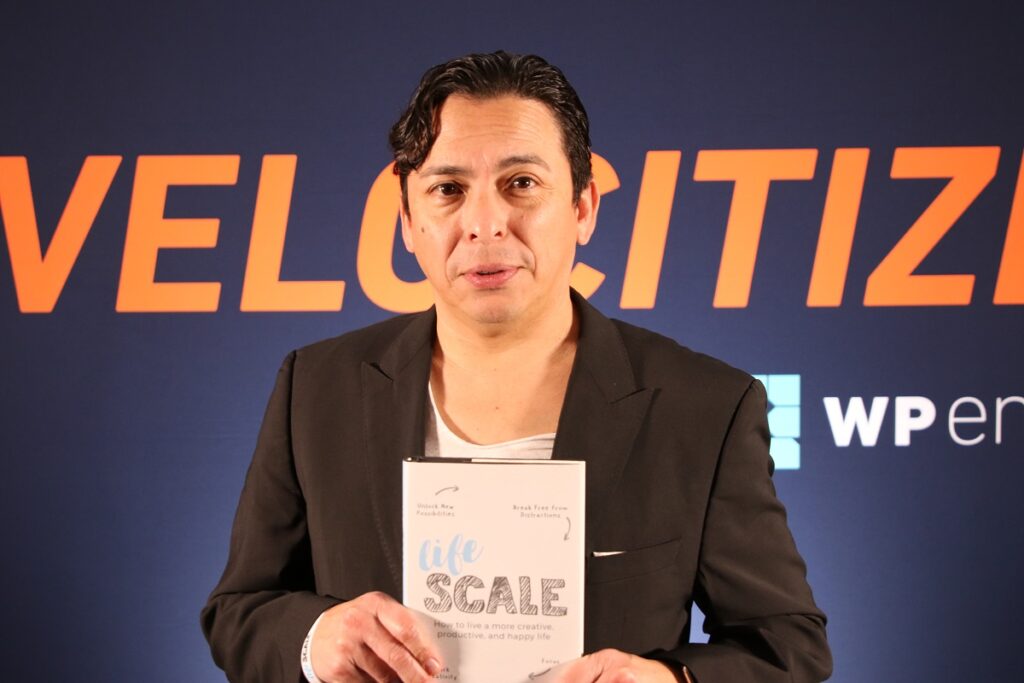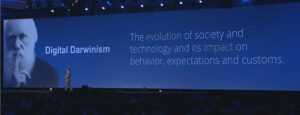
A new year, a new you…
The year was 2019. The place was Austin, Texas, during SXSW. Shortly after my keynote and official debut of LifeScale, I visited the Velocitize Talks studio hosted by WP Engine. There, I shared research and insights into my latest book, along with digital transformation, the future of brand, the impact of digital distractions, and the importance of living a more creative life.
After all this time, I’m proud to finally share the results of that session with you. The video is here and at the end of the post. Feel free to jump straight to the video if you’d rather watch than read…
—
Brian Solis on Creativity and Digital Transformation
Brian Solis is a renowned futurist, bestselling author, top international keynote speaker and a digital anthropologist. He is also the Global Innovation Evangelist at Salesforce, where he explores global digital trends and their impact on market dynamics.
That research led me to discover what was happening to us, to our brains, to our bodies, as we use technology.
In his book, “Lifescale: How to Live a More Creative, Productive, and Happy Life,” Solis reflects on his personal journey of self discovery to craft a narrative around digital transformation and the impact that technology has on us. Examining different behaviors and patterns, Solis shows his readers techniques and exercises to work through distractions and prioritize what matters.
Your body produces chemicals that give you the sensation of a lot of different things like joy and excitement but also anxiety…your body learns how to adapt so that it becomes a new normal—but it’s not normal.
The average American is definitely distracted, engaging with screens and devices more than 10 hours a day, according to psychologist Doreen Dodgen-Magee, an expert on the negative impacts of too much screen time. This is especially problematic for younger children and their growing interaction with screens and video content. In a Pew Research Center report, 80% of parents with a child age 11 or younger say their child watches videos on YouTube. Over half say that their child does this on a daily basis.
 Generation Everyone (5:20)
Generation Everyone (5:20)
Anyone who lives a digital lifestyle, whether you’re 55 or you’re 25 or you’re 17, your body is actually changing as you use technology so you start to become more similar.
So much focus is on Gen Z that you’d think it’s the only age group around. That’s not to say that Gen Z’s impact on technology, along with their views on social justice and brand loyalty, isn’t of great consequence. However previous generations, including Baby Boomers, need to be understood and engaged as well.
For example, according to Nielsen statistics, 57% of baby boomers use tablets compared to 35% of Millennials. Gen Xers are the biggest users of social media compared to any other demographic group. And 95% of baby boomers use email regularly. Clearly when it comes to technology, devices and content across generations, uniformity is not the answer.
Life story (6:25)
I wanted to give people the space and the permission to be able to spark creativity, whether that’s a little “c” with everyday stuff or a big “C” creativity.

The focus of “Lifescale” is not really about technology, Solis says. It’s more about the decisions you make in your relationship with technology, aptly called “lifescaling.” The themes are broader, from mindfulness to values, but his main goal was to help the reader reignite creativity in the face of distractions.
In case you think that distraction in the digital age is exaggerated, consider one survey from technology company Asurion that found that Americans check their mobile phones an average of 80 times a day. The most ubiquitous users reported checking their phones 300 times a day.
Pulled back from the edge (8:02)
When it comes to brand marketing, what I’m asking is to think from an artist’s standpoint so that means originality, creativity, some sense of personal inspiration and then you use technology as an enabler for that.
Solis believes that brand marketing should be rooted in artistry and creativity, not the newest technologies. Marketers should view a campaign as an artist, using technology to enable that vision.
The majority of brand marketing today, Solis says, is rooted in analog frameworks and mindsets. More personal old-school campaigns used prior to the digital age, such as events and even snail mail, can expand your reach. A study by the Direct Marketing Association found that 79% of consumers will act immediately on direct mail versus 45% on emails.
And don’t forget the billboard.

Back to the future (9:18)
Data science is a social science plagued incessantly by cognitive biases. Making sense of new technologies happens when you bring disciplines like psychology, sociology, anthropology, ethnography. All of these things add up to understanding what’s happening and what we can do differently.
Over the next two to three years, AI (Artificial Intelligence) and machine learning will only get smarter, Solis notes, so now is the time for humanities. There also needs to be a process in place that can absorb all of the disruptions around us.

Brian Solis | Author, Keynote Speaker, Futurist
Brian Solis is world-renowned digital analyst, anthropologist and futurist. He is also a sought-after keynote speaker and an 8x best-selling author. In his new book, Lifescale: How to live a more creative, productive and happy life, Brian tackles the struggles of living in a world rife with constant digital distractions. His previous books, X: The Experience When Business Meets Design and What’s the Future of Business explore the future of customer and user experience design and modernizing customer engagement in the four moments of truth.
Invite him to speak at your next event or bring him in to your organization to inspire colleagues, executives and boards of directors.





Leave a Reply